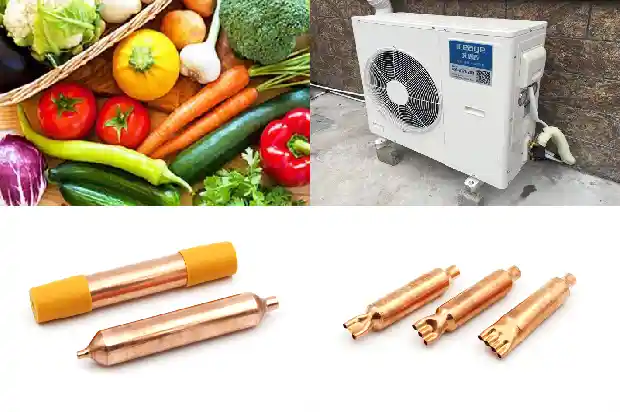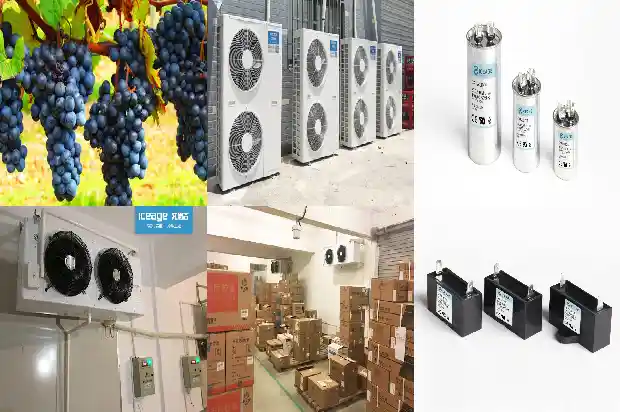A Detailed Analysis of the Nine Reasons for the Low Pressure in the Refrigeration System!
2025-03-01
Common causes of low-pressure faults in air conditioners are as follows:
- The copper pipe of the air conditioning refrigeration system is too long.
- The filter screen of the indoor unit of the air conditioner is dirty and blocked.
- The dryer filter in the air conditioning refrigeration system is dirty and blocked, or the copper pipe is blocked by oil.

- The low-pressure protector in the air conditioning refrigeration system malfunctions.
- The solenoid valve in the air conditioning refrigeration system cannot be opened.
- The expansion valve in the air conditioning refrigeration system malfunctions.
- The refrigerant in the air conditioning refrigeration system leaks.
- The condenser of the air conditioning refrigeration system dissipates heat too well.
- The liquid return pipeline in the air conditioning refrigeration system is flattened, resulting in unsmooth liquid return.
In summary, there are actually two reasons, and you can refer to them one by one:
The first fundamental reason:
There is not enough refrigerant entering the evaporator.
The second fundamental reason:
The heat exchange of the evaporator is not good!
The first fundamental reason:
There is not enough refrigerant entering the evaporator.
The second fundamental reason:
The heat exchange of the evaporator is not good!
By mastering these two principles and analyzing the causes of these two points one by one, the faults can be easily eliminated!
For example, let's briefly analyze the second fundamental reason. The reasons for the poor heat exchange of the evaporator can be simply listed as follows:
For example, let's briefly analyze the second fundamental reason. The reasons for the poor heat exchange of the evaporator can be simply listed as follows:
- Reasons related to the fan: Fan malfunction, small air volume, problems with the fan bearing, etc.;
- The heat exchange area of the evaporator is small, the evaporator is severely frosted, there is too much dust on the evaporator, etc.;
The following is a detailed analysis of the low-pressure alarm of the refrigeration air conditioner. Welcome to refer to and learn from it!
- The copper pipe of the air conditioning refrigeration system is too long:
During the debugging process, the low-pressure alarm time set for some air conditioners at the factory is relatively short (usually 120 seconds);
When the copper pipe of the air conditioner being debugged is long, it leads to an extended time for the refrigerant to return to the evaporator, resulting in a low-pressure alarm fault.
Solution: The low-pressure alarm time can be increased to 180 seconds. In an environment with weather changes, the low-pressure alarm time also needs to be appropriately increased. - The filter screen of the indoor unit of the air conditioner is dirty and blocked:
The air circulation will adsorb the dust in the environment onto the surface of the air conditioner filter screen. Some users will ignore this problem. Day after day, the air conditioner filter becomes too dirty, and the evaporator freezes, leading to a low-pressure alarm fault of the air conditioner.
Solution: Replace the filter screen of the indoor unit of the air conditioner. - The dryer filter is dirty and blocked or the copper pipe is blocked by oil:
The connection of copper pipes requires welding. Some copper slag cannot be completely cleaned just by blowing out the dirt. The dirt in the refrigeration system will accumulate in the dryer filter. During the operation of the air conditioning refrigeration system, there will be a temperature difference at both ends of this filter.
Solution: In the case where the filter is extremely dirty, the refrigeration system needs to be blown out or cleaned again. The general treatment method is to replace the dryer filter with the same model and specification. - The low-pressure protector in the air conditioning refrigeration system malfunctions:
We hang a pressure gauge to detect the air conditioning refrigeration system. When the pressure is normal, use a multimeter to measure the circuit of the low-pressure protector, or short-circuit the low-pressure protector and start the compressor to run. If the refrigeration cycle is normal, it indicates that the low-pressure protector is faulty.
Solution: Replace the low-pressure protector with the same specification and model. - The solenoid valve in the air conditioning refrigeration system cannot be opened:
When the refrigeration system is running, the sound of the solenoid valve opening can be heard; if the solenoid valve does not open, the low-pressure will gradually drop until a low-pressure alarm occurs;
Reset the alarm on the air conditioner control panel, and the low pressure will not rise. At this time, measure the solenoid valve coil. If there is a resistance value, it means it is normal, and if it is infinite, it means the coil has been burned out.
Solution: Replace the solenoid valve coil with the same specification and model. - The expansion valve in the air conditioning refrigeration system malfunctions:
If the expansion valve malfunctions, when the refrigeration system is running, the low pressure cannot rise, the high pressure cannot rise either, and adding refrigerant cannot make the low pressure rise.
Solution: First, adjust the opening degree of the expansion valve. If there is still no effect, it is necessary to replace the expansion valve with the same specification and model (Note: It is necessary to check whether the expansion valve is dirty blocked or ice blocked). - The refrigerant in the air conditioning refrigeration system leaks:
First, hang a pressure gauge to detect the air conditioning refrigeration system. If there is no pressure display as soon as the pressure gauge is hung, it means that the refrigerant in the refrigeration system has leaked out completely;
If there is still pressure at this time, the refrigeration system can barely run. If refrigerant is added and the pressure rises immediately, it also indicates a refrigerant leak.
Solution: First, detect all parts of the refrigeration system to check for any signs of oil leakage. Use detergent to focus on checking the oil leakage position; if necessary, conduct segmented pressure holding on the refrigeration system and then check again. After finding the leakage point, weld to repair the leak, and debug the refrigeration system again. - The evaporator of the air conditioning refrigeration system dissipates heat too well:
This mainly occurs in situations where the ambient temperature is low, such as in winter. We can often see that in winter, some cooling tower equipment needs to turn off the fans, and the reason is also that the condensing pressure is too low.
Solution: Raise the starting pressure of the air conditioner; or modify the outdoor fan and change it to a speed-regulating fan, which can better solve the problem. - The liquid return pipeline in the air conditioning refrigeration system is flattened, resulting in unsmooth liquid return:
This situation occurs with a relatively low probability. It is necessary to check the copper pipe to find the flattened position.
Solution: Find the position of the flattened copper pipe and replace the copper pipe with the same specification.
The low-pressure alarm of the air conditioner is one of the most common problems in maintenance work, and the causes are multi-faceted. Make reasonable judgments. The above are some opinions on the judgment of the low-pressure alarm, for reference only. I hope it will be helpful to you.
Related Articles
- Analysis of the Working Process and Principle of Hot Fluoride Defrosting for Air Coolers
- Advantages and Disadvantages of Air-cooled Multi-connected Units and Analysis of Their Components
- Cause Analysis of High Discharge Temperature and Overload Protection of Modular Units
- Analysis of the Causes and Hazards of Corrosion in the Circulating Water System
- Analysis of Common Auxiliary Components in the Refrigeration System
- Analysis of the Composition, Control and Operation Process of Cold Storage System
- Analysis of Causes for Compressor Liquid Hammer, Overheating and Pre - heating
- Analysis of Seven Reasons for Ice Formation in Computer Room Air Conditioners
- Analysis and Troubleshooting of Common Faults in Air - source Heat Pumps
- Analysis of 6 Components in Air - cooled Multi - split Systems
- Analysis of Advantages, Disadvantages and 34 Common Components of Multi - split Air Conditioners
- Common Causes and Analysis of High and Low Pressure Alarms
- Common Causes and Analysis of Compressor Thermal Protection
- Analysis of Common Faults in Compressor Overcurrent and Burnout
- Analysis of Causes for Safety Valve Leakage
- Analysis of Refrigeration Compressor Motor Faults
- Fault Analysis of Working Principle of Screw Chiller Unit
- Analysis and Treatment of Common Low-Pressure Faults in Chillers
